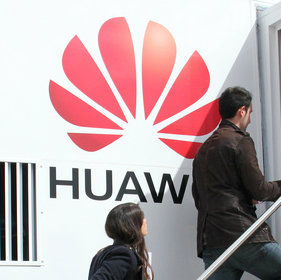Is Huawei leaving its US customers high and dry?
Some companies have suggested that Huawei is no longer supporting its existing US customers amid government actions against the Chinese vendor. But others say that's not true.

There are indications that Huawei is not supporting its existing US customers with services and products for current deployments. However, according to a person familiar with the matter, Huawei continues to support its existing US customers despite US government actions aimed at extinguishing its US business and tearing its equipment out of US networks.
"In 2019, the [Federal Communications] Commission deemed Huawei and ZTE as national security risks, barring rural carriers from utilizing government funds from purchasing equipment from Huawei and ZTE," wrote the Secure Networks Coalition (SNC) – which comprises Tasman Technologies, Televate and Monetti and Associates – in a filing with the FCC. The three companies are working to sell their services to US wireless network operators that may be required to remove equipment in their networks supplied by the two Chinese vendors. "Recently, SNC has heard concerns that some operators indicating that Huawei may be already withdrawing network support. This poses a potential risk to current network operations [and] makes planning and integrating new vendors' equipment EXTREMELY difficult and may result in a delay to operators' migration schedules."
Indeed, at least one of Huawei's US carrier customers contacted by Light Reading said it has not received any new equipment from the vendor since last year.
"I'm not aware of Huawei's plan to leave the US market and I think the [SNC] statement is just speculation. On the other hand, we haven't been able to order any new equipment from Huawei since 2019, so it wouldn't surprise me if they give up on the market," wrote James Kail, president and CEO of LHTC Broadband, in response to questions from Light Reading. The company is a fiber-to-the-home provider across 68 square miles of Pennsylvania, and is also one of the few US operators using Huawei equipment that's willing to speak about the issue.
Added Kail: "The outcome of the [US] presidential election could have an impact as well."
The issue is an important one; after all, Huawei's equipment helps to underpin the networks of a number of smaller US network operators, including United TelCom, SI Wireless, Viaero, James Valley Telecommunications (JVT), NE Colorado Cellular, United Telephone Association, Nemont Telephone Cooperative and Union Telephone Company.
"This is a critical issue for affected carriers – who are essentially frozen until funding is made available to help them replace covered equipment," CCA President and CEO Steven Berry told Light Reading in response to questions on the issue. CCA is a trade association representing many of Huawei's US customers.
"CCA is working with Congress to get the Secure and Trusted Communications Networks Reimbursement Program funded as soon as possible so these carriers can continue to provide vital mobile broadband services to their customers, many of whom reside in rural areas," Berry added.
However, according to someone familiar with the matter who asked to remain anonymous, Huawei continues to provide support, equipment and services to its US customers.
Huawei declined to comment on the issue.
FCC vote
The situation is timely considering the FCC is scheduled to vote Thursday on whether to officially require some US wireless network operators to rip out equipment from Huawei and ZTE from their networks and replace it with equipment from "trusted" suppliers. The FCC will also consider "the procedures and criteria" for how that equipment should be removed, and what it can be replaced with.
However, that FCC vote won't allocate any money toward the Huawei "rip and replace" effort; the price tag for the project is around $1.6 billion. The FCC and the companies involved have been urging Congress to allocate the money necessary to implement the program.
There are several pieces of legislation wending through Congress that would fund the effort, though none have made it to the president's desk.
The situation is clearly beginning to affect some operators, which have been trapped between US government actions against their equipment suppliers and market movements toward newer technologies like Voice over LTE and 5G that require new equipment. For example, Rise Broadband recently said it plans to rip out ZTE's equipment from its network on the hope that it might be eligible for reimbursements at some point in the future.
Related posts:
— Mike Dano, Editorial Director, 5G & Mobile Strategies, Light Reading | @mikeddano
About the Author(s)
You May Also Like




_International_Software_Products.jpeg?width=300&auto=webp&quality=80&disable=upscale)







